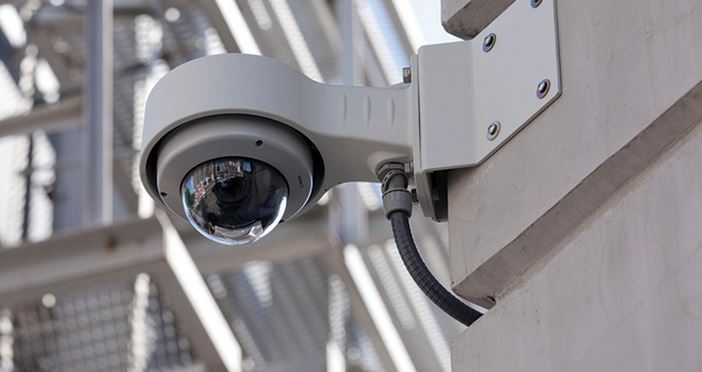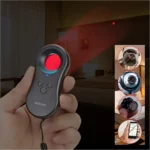In this article, we will discuss the factors you should consider when selecting a security camera for your home. We will explore the different types of security cameras available and their features, as well as offer tips for installation and placement. By the end of this article, you will have the knowledge needed to choose the perfect security camera that meets your specific needs and ensures the safety of your home.

Factors to consider when choosing a security camera
Outdoor or indoor surveillance
When considering purchasing a security camera for your home, one of the first factors to consider is whether you need it for outdoor or indoor surveillance. This decision will depend on the areas you want to monitor and the weather conditions in your area.
For outdoor surveillance, it is crucial to choose weatherproof cameras that can withstand the elements. Look for cameras with appropriate IP ratings that indicate their resistance to dust and water. These cameras are designed to withstand rain, snow, humidity, and extreme temperatures.
On the other hand, for indoor surveillance, you may want to opt for more discreet cameras that can blend in with your decor. These cameras are usually smaller and can be easily mounted on walls or ceilings without drawing attention.
Resolution and image quality
When it comes to security cameras, resolution and image quality play a vital role in capturing clear and detailed footage. Higher resolution cameras can provide better image quality, allowing you to easily recognize faces, license plates, or other important details.
It is recommended to select cameras that have at least 1080p resolution, which is also known as Full HD. This resolution ensures that the video footage is clear and sharp. Avoid cameras with lower resolution as they may produce pixelated or blurry images.
In addition to resolution, consider the image sensor size and lens quality of the camera. Larger image sensors can capture more light, resulting in better low-light performance. Similarly, high-quality lenses can offer sharper and more accurate images.
Field of view
The field of view is another important factor to consider when choosing a security camera. It refers to the area that the camera can capture and monitor. The coverage area you require will depend on the specific areas you want to surveil.
For larger areas, such as driveways or backyards, it is advisable to choose cameras with wider viewing angles. Cameras with wide-angle lenses can capture a larger area, reducing the number of cameras needed for comprehensive coverage.
Some cameras also offer adjustable field of view options, allowing you to zoom in or out and adjust the camera’s angle. This can be particularly useful if you need to focus on specific areas or if you want to monitor multiple areas with a single camera.
Night vision capabilities
If you intend to monitor your property during nighttime or low-light conditions, it is essential to consider the night vision capabilities of the security camera. Night vision allows the camera to capture clear footage even in complete darkness.
Evaluate the camera’s infrared (IR) range, which indicates how far the camera can illuminate the area with its built-in IR LEDs. The larger the IR range, the better the camera can see in the dark. Some cameras may offer a longer IR range than others, so choose accordingly based on your specific needs.
Additionally, opt for cameras with high-quality IR cut filters. These filters help eliminate the unwanted effects of infrared light during daylight hours, resulting in better color reproduction and more accurate images.
Power source
When it comes to the power source of your security camera, you have two primary options: wired or wireless. Each has its pros and cons, so it’s important to consider your specific circumstances and preferences.
Wired cameras require a physical connection to a power outlet or a centralized power source. They usually offer a more stable and continuous power supply, ensuring uninterrupted surveillance. However, the installation process can be more complicated, as it involves running power cables and possibly drilling holes in walls.
Wireless cameras, on the other hand, are powered by batteries or rechargeable power sources. They offer more flexibility in terms of camera placement since they are not restricted by power outlets. However, they require regular battery replacements or recharging, which can be inconvenient.
Consider the availability of power outlets in the areas you want to install the cameras. If power outlets are not easily accessible, wireless cameras may be a more suitable option. Keep in mind that battery-powered cameras may require more maintenance and monitoring to ensure they remain operational.
Weather resistance
Weather resistance is crucial for outdoor security cameras as they are exposed to different weather conditions. Look for cameras that have appropriate IP ratings, indicating their resistance to dust and water.
Ideally, choose cameras with a higher IP rating, such as IP66 or IP67, as they offer better protection against dust and water ingress. These cameras can withstand heavy rain, snow, and extreme temperatures. If you live in an area with particularly harsh weather conditions, such as heavy wind or intense heat, consider cameras specifically designed for those environments.
In addition to IP ratings, consider the housing materials of the cameras. Look for cameras with durable construction that can withstand impacts and vandalism. Metal or hardened plastic housings provide better protection than cheaper materials.
Camera placement
Proper camera placement is essential to maximize the effectiveness of your security system. Strategically position the cameras to cover the areas you want to monitor while minimizing blind spots. Consider the following tips for optimal camera placement:
- Position cameras at entry points such as doors and windows to capture potential intruders.
- Mount cameras at a height that provides a clear view of the area without being easily accessible.
- Avoid obstacles such as trees or shrubs that could block the camera’s field of view.
- Consider the visibility of the cameras as a deterrent. Visible cameras can discourage potential intruders from targeting your property.
- Balance coverage and privacy concerns. If you live in a densely populated area, be mindful of your neighbors’ privacy and ensure that cameras do not capture sensitive areas.
Storage options
When it comes to storing the recorded footage from your security cameras, you have two options: local storage or cloud storage. Each option has its advantages and considerations.
Local storage involves storing the footage directly on a physical device, such as a hard drive or a Network Video Recorder (NVR). This option provides full control and ownership over your data. You can easily access the footage without relying on an internet connection, and there are no recurring costs for cloud storage subscriptions.
However, local storage may have limited capacity, depending on the device’s storage capacity or hard drive size. It is essential to assess the amount of storage required based on your surveillance needs. Consider backup options to ensure redundancy and protect against potential hardware failures.
Cloud storage, on the other hand, allows you to store the footage securely on remote servers provided by the camera manufacturer or a third-party service. This option ensures that your footage is safe even if the camera is stolen or damaged. It also provides remote access to the recorded footage from anywhere with an internet connection.
However, cloud storage usually requires a subscription plan, which can add recurring costs over time. Consider the long-term expenses of cloud storage and the internet bandwidth required for uploading the footage. It is also essential to research and choose a reputable and secure cloud storage provider to protect your data.
Connectivity and remote access
Connectivity and remote access are essential features to consider when choosing a security camera. Ensure that the camera can connect to your home’s Wi-Fi network for seamless integration with your existing devices and infrastructure.
Most modern security cameras offer mobile apps or web interfaces that allow you to remotely access and control the camera. This feature enables you to view the live feed, control camera settings, receive motion alerts, and review recorded footage from anywhere using your smartphone, tablet, or computer.
Check the compatibility of the camera’s mobile app with your device’s operating system. Ensure that the app has positive reviews and receives regular updates from the manufacturer to ensure optimal performance and security.
Budget considerations
Finally, it is important to consider your budget when choosing a security camera for your home. The price range for security cameras can vary significantly depending on the features, brand, and quality.
Set a budget based on your specific requirements and prioritize the features that are most important to you. Avoid compromising on essential features such as resolution, night vision capabilities, and weather resistance.
Research different brands and models to compare prices and read customer reviews. Look for cameras that provide the best value for your budget, taking into account their reliability, durability, and customer support.
Conclusion
Choosing the right security camera for your home is an important decision that requires careful consideration. By evaluating factors such as outdoor or indoor surveillance, resolution and image quality, field of view, night vision capabilities, power source, weather resistance, camera placement, storage options, connectivity and remote access, and budget considerations, you can make an informed decision that provides you with peace of mind for your home’s security. Remember to thoroughly research different options and weigh their features and benefits before making your final purchase.




